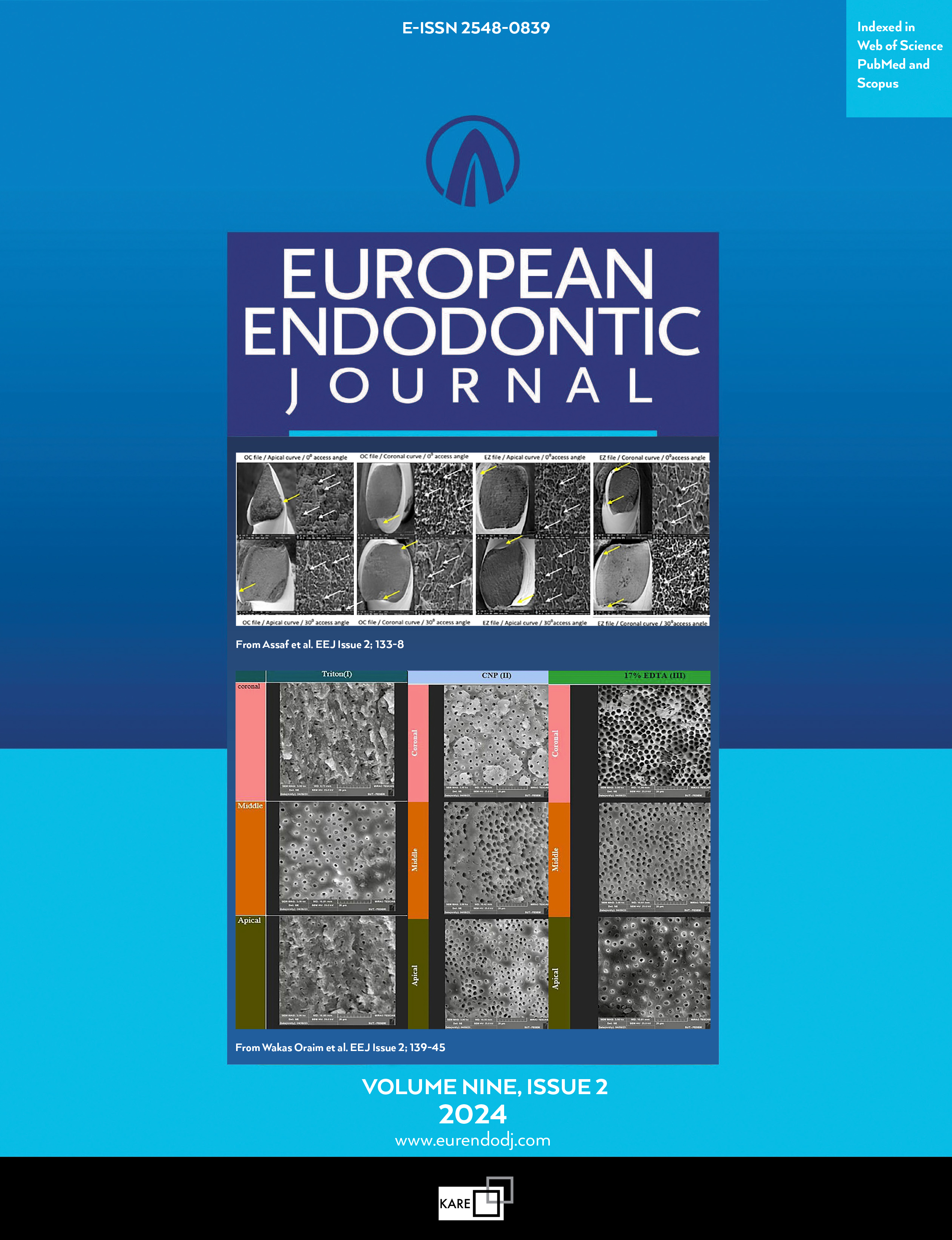Metrics
2022 IMPACT FACTOR
5 year Impact Factor
Eigenfactor
2022 CiteScore
Journal Citation Reports (Clarivate, 2023)(Dentistry, Oral Surgery & Medicine (Science))
Influence of Root Canal Curvature on Wall Cleanliness in the Apical Third during Canal Preparation
Lieven Robberecht1, Marion Dehurtevent4, Gaetan Lemaitre2, Hélène Béhal4, Jean- Christophe Hornez3, Anne Claisse- Crinquette51Department of Restorative Dentistry and Endodontics University of Lille Faculty of Odontology, Lille; Department of Material Chemistry, University of Valenciennes, Famars, France2Department of Restorative Dentistry and Endodontics University of Lille Faculty of Odontology, Lille, France
3Department of Material Chemistry, University of Valenciennes, Famars, France
4Department of Prosthodontics, University of Lille, Lille, France
5Department of Bioistatistics, University of Lille, Lille France
Objective: The aim of this study was to evaluate the influence of root canal curvature (curved and straight root canals), prepared using reciprocating and rotary files, on wall cleanliness during root canal treatments. Methods: Thirty curved and 30 straight human root canals were prepared using ProTaper (Dentsply), Pro- Taper Next (Dentsply) and Reciproc files (Dentsply) (n=20/group). The roots were split longitudinally and observed using a scanning electron microscope. Six micrographs were obtained at 1, 3 and 5 mm from the working length (WL). Two blinded observers scored the amount of debris. Mean debris scores were com- pared using a non-parametric the Mann-Whitney U test or Kruskal-Wallis test, and a Bonferroni correction was used for multiple comparisons.
Results: Considering all the shaping systems together, the debris scores were lower in curved root canals (P<0.05). Reciproc and ProTaper Next performed better than ProTaper in straight canals (P<0.05). No differ- ence was found between ProTaper Next and Reciproc regardless of the canal curvature or distance from the WL. Considering all the shaping systems together, cleanliness increased when pulling away from the WL. Conclusion: The anatomical configuration of the root canal influences the quality of cleaning by shaping instruments regardless of the instrument kinematics during endodontic procedures. In every circumstance, the last millimetres of the apical third remain the most difficult area to clean.
Corresponding Author: Lieven Robberecht, France
Manuscript Language: English
(1182 downloaded)


